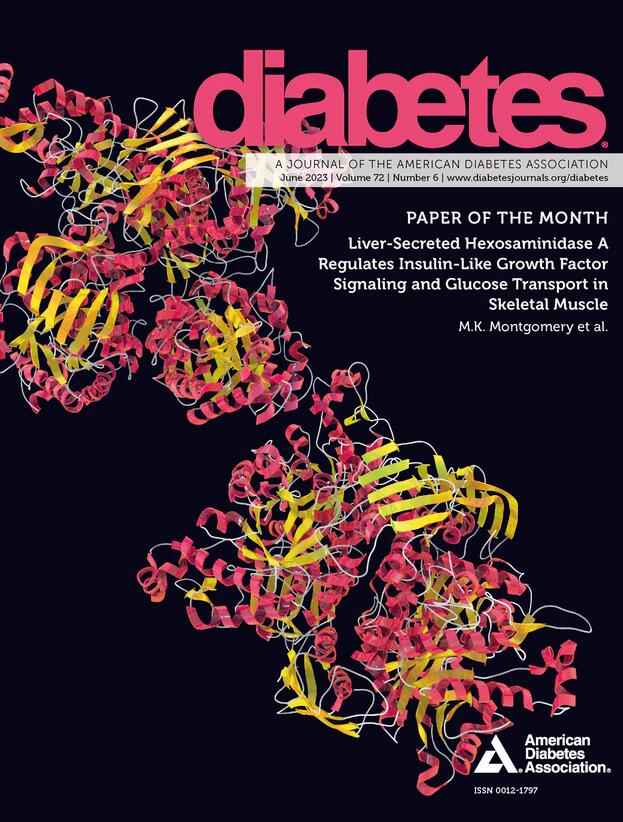A functional and mechanistic explanation for the unique clinical success of the glucokinase activator dorzagliatin for treatment of type 2 diabetes
IF 6.2
1区 医学
Q1 ENDOCRINOLOGY & METABOLISM
引用次数: 0
Abstract
Glucokinase activators (GKA) are a long-sought therapeutic modality for the treatment of Type 2 Diabetes (T2D). However, all GKAs failed clinical trials, with the recent exception of dorzagliatin (Hua Medicine). A comprehensive approach using human islet perfusions, enzyme kinetics, x-ray crystallography, and modeling studies was applied to compare the effects of dorzagliatin with the failed GKA MK-0941 (Merck Pharmaceuticals), which is well-characterized both clinically and mechanistically. Dorzagliatin improves glucose stimulation of insulin secretion (GSIS) in a dose- and glucose-dependent manner, in contrast to MK-0941 which induces maximal insulin secretion at low doses and glucose concentrations. To understand these functional differences, the atomic resolution structure of the dorzagliatin-glucokinase (GK) complex was determined and compared with the GK/MK-0941 structure. MK-0941 binds to a pocket accessible in both open and closed conformations, has a strong interaction with Y214, mutation of which produces the most clinically severe activating mutation, and produces a high energy barrier for the open-to-close transition. In contrast, dorzagliatin only binds favorably to the closed form of glucokinase, interacting primarily with R63, and causing a low energy barrier for the open-to-close transition. This provides the molecular rationale for the clinical success of dorzagliatin which can guide the future development of next-generation allosteric activators of GK.葡萄糖激酶激活剂dorzagliatin治疗2型糖尿病的独特临床成功的功能和机制解释
葡萄糖激酶激活剂(GKA)是一种长期寻求治疗2型糖尿病(T2D)的治疗方式。然而,所有的gka临床试验都失败了,最近的一个例外是dorzagliatin(华医药)。采用人体胰岛灌注、酶动力学、x射线晶体学和模型研究的综合方法来比较dorzagliatin与失败的GKA MK-0941(默克制药公司)的效果,后者在临床和机制上都有很好的特征。Dorzagliatin以剂量和葡萄糖依赖的方式改善葡萄糖刺激胰岛素分泌(GSIS),而MK-0941在低剂量和低葡萄糖浓度下诱导最大胰岛素分泌。为了了解这些功能差异,我们测定了dorzagliatin-glucokinase (GK)复合物的原子分辨率结构,并与GK/MK-0941结构进行了比较。MK-0941结合到开放和封闭构象的口袋上,与Y214有很强的相互作用,Y214的突变会产生临床上最严重的激活突变,并为开放到关闭的转变产生高能量屏障。相比之下,dorzagliatin仅与封闭形式的葡萄糖激酶有利结合,主要与R63相互作用,并为开放到关闭的转变造成低能量屏障。这为dorzagliatin的临床成功提供了分子基础,可以指导下一代GK变构激活剂的未来发展。
本文章由计算机程序翻译,如有差异,请以英文原文为准。
求助全文
约1分钟内获得全文
求助全文
来源期刊

Diabetes
医学-内分泌学与代谢
CiteScore
12.50
自引率
2.60%
发文量
1968
审稿时长
1 months
期刊介绍:
Diabetes is a scientific journal that publishes original research exploring the physiological and pathophysiological aspects of diabetes mellitus. We encourage submissions of manuscripts pertaining to laboratory, animal, or human research, covering a wide range of topics. Our primary focus is on investigative reports investigating various aspects such as the development and progression of diabetes, along with its associated complications. We also welcome studies delving into normal and pathological pancreatic islet function and intermediary metabolism, as well as exploring the mechanisms of drug and hormone action from a pharmacological perspective. Additionally, we encourage submissions that delve into the biochemical and molecular aspects of both normal and abnormal biological processes.
However, it is important to note that we do not publish studies relating to diabetes education or the application of accepted therapeutic and diagnostic approaches to patients with diabetes mellitus. Our aim is to provide a platform for research that contributes to advancing our understanding of the underlying mechanisms and processes of diabetes.
 求助内容:
求助内容: 应助结果提醒方式:
应助结果提醒方式:


